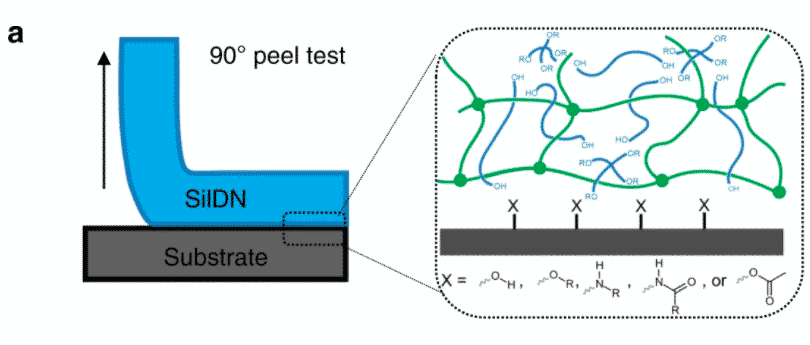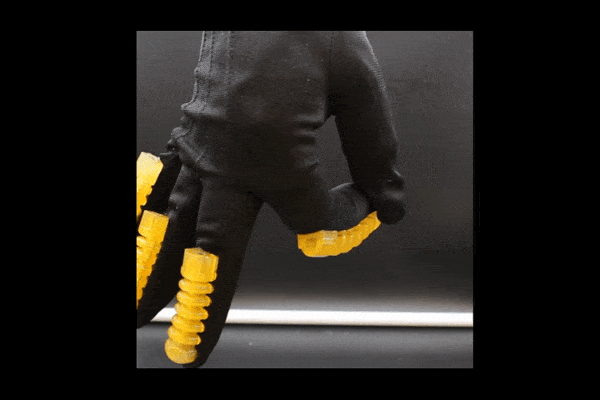With Facebook Connect 2020 scheduled to take place next week, the company’s Reality Labs team announced the development of 3D printed Virtual Reality (VR) gloves.
The device was co-created with researchers from Cornell University and has a soft pneumatic actuator that can “measure local force” and provide users with “tactile feedback.” Considering that Facebook established Reality Labs to oversee the development of its Oculus Rift gaming subsidiary VR, 3D printed gloves may still be part of the upcoming conference.
The 3D printed gloves of the research team can be used in Facebook’s upcoming Digital Connect conference. The picture is from Nature Communications.
3D printing soft robot equipment
Compared with equipment made of conventional synthetic materials, equipment constructed with soft materials has inherent advantages in shock absorption, load management, and passive energy recovery. Soft tissues are particularly useful in robotics because their low modulus and greater scalability allow them to create deformable robots that can be deformed into almost any state without breaking.
Silicone rubber is heat-resistant and chemically inert, making it an ideal choice for soft robots. Nonetheless, conventional manufacturing processes usually involve replication or injection molding, which only produces simple prismatic shapes. Recent rubber research has studied the use of liquid silicone materials as inks for extrusion-based 3D printing, but their modified properties have also weakened their crosslink density.
Due to the reduced material strength, the extrusion-based samples showed limited printing fidelity for prominent features, causing them to slump before curing. Other research teams have used stereolithography (SLA) technology to produce parts with liquid resin, which provides greater stability, but the toughness is different from that of commercially available rubber.
Moreover, the processing requirements of SLA require the use of stable low-viscosity resins, which hinders the use of conventional methods to strengthen them. As an alternative strategy, the research team hypothesized that creating a dual network (DN), in which two polymers occupy the same volume, would give the rubber a higher strength.
In the team’s new method, the two polymer layers have different qualities and functions. The outer layer is brittle and dissipates energy, while the secondary network remains intact and able to withstand heavy loads. Using their DN, the researchers proposed that they can not only match the strength quality of commercial rubber, but also bond printed objects with other substrates.

The team’s double silicone 3D printing material
In order to create new materials, researchers used thiol-alkenyl silicone formulations as the basis because of its low viscosity, fast gelation, and high reaction conversion quality. In contrast, the secondary polymers in DN need to form their own unique network, so the team used Mold Max series resins due to their inherent toughness and stiffness.
Through a two-step combination process, the rubber sequentially forms a light-cured thiolene silicone and a mechanically strong condensation-cured silicone. Subsequent infrared spectroscopy tests showed that the relative mass fraction of the two networks can be adjusted to adjust the printability and mechanical properties of the resin.
For example, it was found that increasing the load of the condensation network can significantly increase the tensile strength of the final part, from 0.008 MPa to 0.92 MPa in the “green” part. The team used four different tin-based rubber materials to conduct experiments to change the basic materials in its DN to adjust its mechanical properties.

Similar printable blend systems have emerged, each with a viscosity low enough to achieve SLA 3D printing. Tin-based materials tend to dominate the mixture by providing higher strength, while integrated elastomers provide more customizable properties through different crosslink densities. To demonstrate the application of its novel polymer network in surgical models, the team then created a hollow 3D printed heart.
Although the heart replica cannot fully replicate the complex mechanical properties of natural tissue, it does have an elastic modulus similar to its biological counterpart. As a result, trained surgeons can deploy joint team silicones for surgery in the future. Combining the flexibility and strength of DN, the team can also manufacture orthopedic gloves with four 3D printed pneumatic actuators.
The device not only allows for dexterous operation, but the combined structure can withstand hundreds of exercise cycles even after more than ten months of use. According to the team, their gloves are very strong and can integrate their soft actuators into other garments to produce a new type of wearable soft robotic device.
Only a week away from Facebook Connect, the team’s timely development of soft robotics technology may also play a role in the future of VR.
Soft robotics and additive manufacturing
In recent years, researchers from many institutions have conducted experiments on 3D printed soft robots, resulting in additive innovations of various shapes and sizes.
A research team at Linköping University in Sweden has used extrusion-based custom 3D printers to create a set of micro-actuators for soft micro-robots. The actuator contains an electroactive polymer that changes shape once it is excited by an electric charge.
Scientists at the University of California, San Diego have used 3D printing to create flexible, walking “insect-like” robots. The team’s cost-effective production technology aims to reduce the entry cost of manufacturing soft robots.
Researchers from Zhejiang University of Technology, Tianjin University, Nanjing University of Science and Technology, and Ritsumeikan University used 3D printed soft robotic fingers. The device uses embedded electrode sensors for operation, which means it does not require an external power source.
The research results of the researchers are explained in detail in their paper entitled “3D Printable Powerful Silicone Double Network” published in the journal Nature Communications. The report is co-authored by Thomas J. Walling, Leif Eric Simonson, Pan Wenyang, Wang Kaiyang, Emmanuel Janellis, Robert F. Shepard and Iig Menges write.


